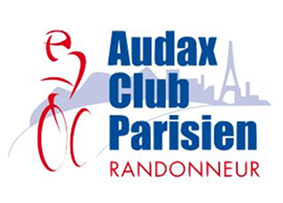정규 브레베
Long-distance unsupported endurance cyclists who cover distances between 200 km and 1200 km and beyond.
Randonneurs are long-distance unsupported endurance cyclists who cover distances between 200 km and 1200 km and beyond. These rides are called a ‘brevet’. Randonneuring is originally from France and is more than 100 years old – it is considered the one of the oldest forms of organized riding and racing in cycling history.
Human-powered
Any form of human powered vehicle is acceptable, but the vehicle must be powered solely by the rider. Each rider must be self sufficient. No personal follow cars or support of any kind are permitted on the course. Personal support is only allowed at checkpoints. Riding together with unregistered riders will result in disqualification.
Paris-Brest-Paris
Every four years in August thousands of Randonneurs from around the globe gather in this country to participate in the 1200 km event Paris-Brest-Paris (PBP) LINK. Riders from Korea have participated in P-B-P since 2011.
Permanents
Besides a brevet, members can ride a permanent. A permanent can be started at any day or time without noticing the management before the start. Registration and riding a permanent is similar to a brevet, without staff available at start and finish. Instead of a brevet card the rider uses a ‘permanent sheet which can be downloaded from the website. See main menu Permanents
Time limits
Brevet time limits are based on an average speed of 15 km/h. This includes rest times.
For example: if a 300 km brevet starts at 06:00 am, riders have to be at the finish 20 hours later (02:00 am the next day).
The introductory 200 km brevet allows 30 minutes extra time.
- 200 KM 13:30 H
- 300km 20:00 H
- 400km 27:00 H
- 600 KM 40:00 H
- 1,000km 75:00 H
- 1,200km 90:00 H
These distances are a minimum, it is usual that the actual distance is 3 to 15 km more. However, the time limit is not altered regarding the actual distance and remains as listed above. A brevet is not a race; completion is a personal achievement and results are never listed in order of time of completion. Upon successful completion of a brevet, riders receive a certificate and can purchase an ACP issued medal documenting their achievement.
위 목록에 있는 브레베를 ‘BRM(Brevet Randonneurs Mondiaux)’이라고 합니다. 완주 시 BRM 기록은 ‘수퍼 란도너’나 ‘KR5000’ 등의 타이틀을 획득하는데 반영됩니다. 완주 시 BRM 기록은 100km당 1점씩 ‘한국 란도너스의 단체 점수’가 되며, 매년 세계 모든 란도너링 단체는 이 점수를 누적해 순위를 공개합니다. BRM에 속하지 않는 브레베로 RM(les Randonneurs Mondiaux)가 있는데, 이는 1200㎞ 또는 그 이상의 브레베입니다. 한국 란도너스는 매년 'KOREA 1200'을 개최합니다. 이 대회는 거리에 따라 90~92시간을 제한 시간으로 적용합니다.
Controls (CP)
Along the route of a brevet, checkpoints are designated. These checkpoints will be published together with the route of the event. Controls are needed to prove that the rider did not take a shortcut. Usually, riders take selfies with the control points for proof of passing, but manned controls are also possible, where the staff gives riders a stamp.
Brevet card
Every rider will receive a brevet card which the rider has to carry during the whole ride. It must be stamped (and time marked) at the start and the finish. Control photos and/or stamps will be checked at the finish, and if the rider finishes within the time limit, a certificate will be handed out and official ACP medals can be purchased. Every brevet card will be officially homologated in Paris by the ACP, and will be acknowledged and registered by the ACP with homologation number. The brevet card is returned to the rider.
Disqualification
Violation of any rule and not arriving within the time limit (OTL - Out of Time Limit) results in disqualification (DNQ). When a rider quits during the ride, his result will be marked as DNF (Did Not Finish)
Complete rulebook
A conveniently arranged list of rules is shown on the website of Randonneurs of the USA (RUSA).


